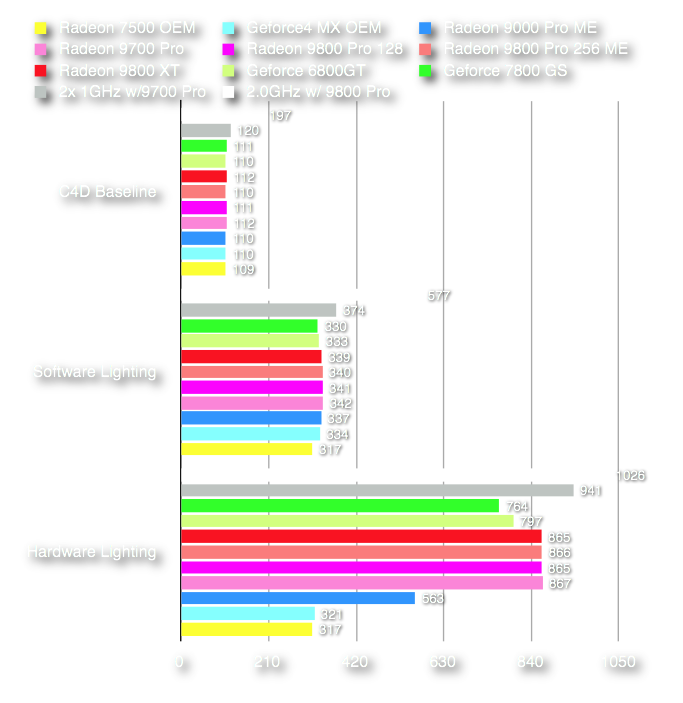







3D Performance
3D is the use of shading and perspective rendering of objects to provide relief, depth and texture of objects or scenes.
3D modeling is an important feature of science, architecture, engineering, graphics designing and gaming software.
3D software defines the lighting characteristics of a 2D object to provide the shading necessary to render the seemingly round, pointed, jagged, etc. surfaces of objects, while hardware translates that into rendered pixels to be placed as images on a monitor.
The GPU power of a graphics card is important in this work, but, equally so, the architecture of the entire graphics card, including the various pipelines and buffers provide for 3D performance.
It is notable that graphics cards of recent architecture have virtually done away with the old pipeline architecture, with more functions being handled by the GPU.
However, with graphics cards that are of interest to a G4 user, pixel pipelines are still important.
That is, unless we can figure out how to use an AGP Radeon HD 2600XT or HD3580 in a G4.
But I digress....
__________________________________________
The following tests are run using Maxons CineBench 9.5, which provide baseline OpenGL figures, as well as software applied lighting and hardware accelerated lighting performance measurements
as implemented in Maxons software engine.
The results will show how well a card supports OpenGL as implemented in the Maxon OpenGL engine.
One note, Cinebench is not CPU independent in the OpenGL testing.
The tests may allow for system comparisons, and to a degree, graphics cards.
It is better to not use the results for direct graphics card comparisons, but rather use when one is choosing a card to run with Maxon software.
Cinebench 9.5 - 133 MHz bus G4 - OS X 10.5.6 - 1920x1200
G4 933 MHz Quicksilver 2002* 4x AGP Graphics
* A dual 1 GHz and a 2.0 GHz SP result is included to illustrate CPU impact on results

If you are going for performance with Maxon software, don’t use a Geforce card, especially the Geforce 7800 GS. Radeon cards of the 9700 and 9800 families provide much better performance.
I would expect the same to be said for the X800XT, and will provide results
as soon as I can lay my hands on one....


